Grow Kohlrabi at Home? Absolutely! And trust me, it’s easier than you think. Have you ever walked through a farmers market and been intrigued by that alien-looking vegetable with the bulbous stem and leafy greens? That’s kohlrabi, and it’s a nutritional powerhouse just waiting to be welcomed into your garden. For centuries, kohlrabi has been a staple in European and Asian cuisines, prized for its crisp texture and mild, slightly sweet flavor. It’s a member of the brassica family, related to cabbage, broccoli, and kale, but with a unique taste all its own.
But why should you bother to grow kohlrabi at home? Well, for starters, homegrown kohlrabi tastes infinitely better than anything you’ll find in the store. Plus, you’ll have complete control over the growing process, ensuring that your kohlrabi is free from harmful pesticides and chemicals. Imagine the satisfaction of harvesting your own fresh, organic kohlrabi and using it in salads, slaws, or even roasting it for a delicious side dish. I’m going to share some simple, yet effective DIY tricks and hacks that will help you cultivate a thriving kohlrabi patch, even if you’re a complete beginner. Get ready to unlock the secrets to growing this unusual, yet incredibly rewarding vegetable!
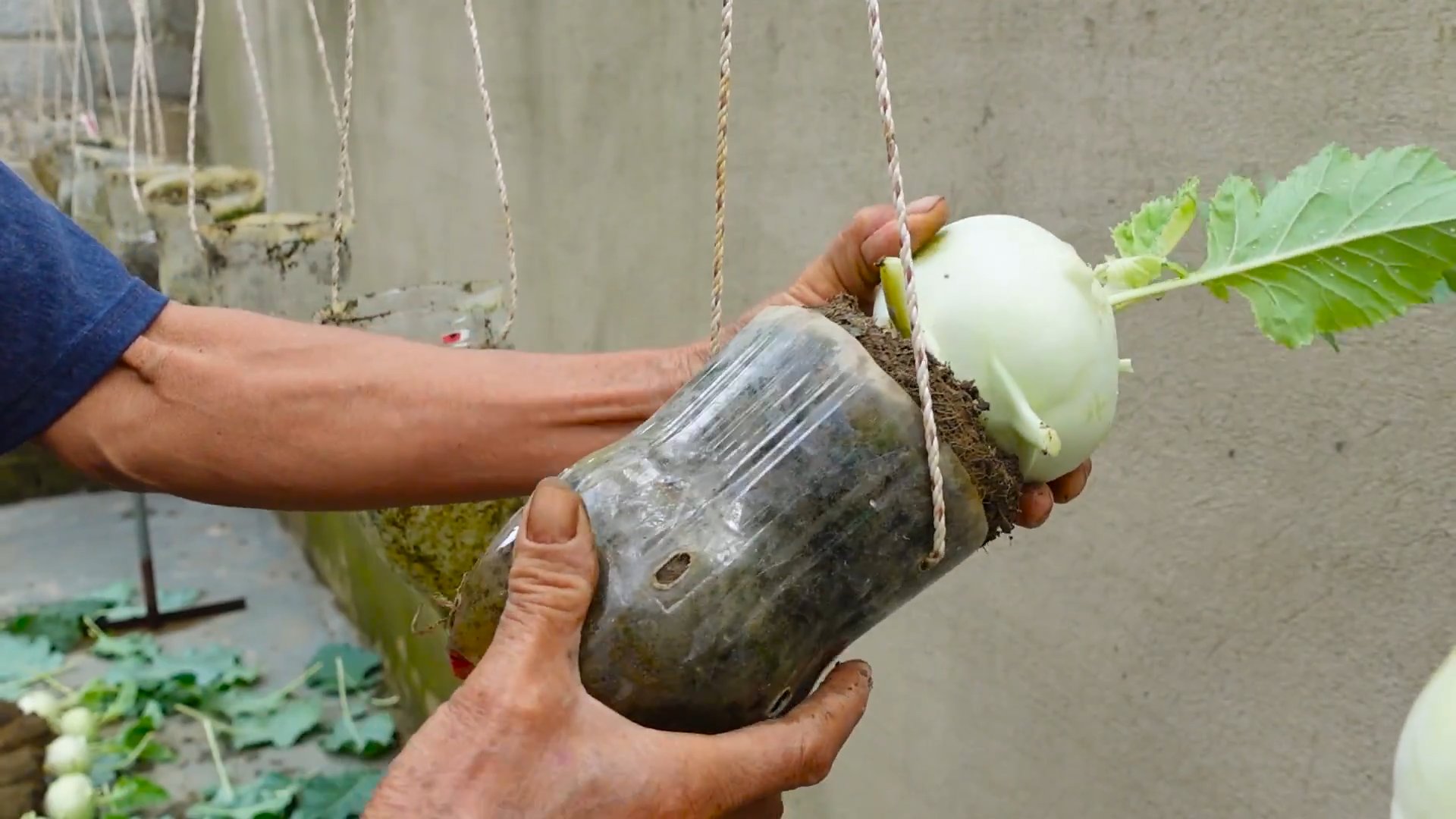
Growing Kohlrabi: A Beginner’s Guide to This Underrated Veggie
Hey there, fellow gardening enthusiasts! Have you ever considered growing kohlrabi? It’s a quirky-looking vegetable, often described as a cross between a turnip and a cabbage, but trust me, it’s incredibly delicious and surprisingly easy to grow at home. I’m going to walk you through everything you need to know to successfully cultivate this unique veggie in your own garden.
What is Kohlrabi Anyway?
Before we dive into the how-to, let’s quickly cover what kohlrabi actually is. Kohlrabi, also known as German turnip, is a member of the Brassica family, which also includes cabbage, broccoli, and cauliflower. The edible part is the swollen stem, which grows above ground. It comes in green, purple, and white varieties, all with a mild, slightly sweet flavor that’s perfect for salads, slaws, or even roasted as a side dish.
Why Grow Kohlrabi?
* Fast Growing: Kohlrabi matures quickly, often ready for harvest in just 6-8 weeks. This makes it a great option for succession planting, allowing you to enjoy multiple harvests throughout the growing season.
* Cool-Season Crop: It thrives in cooler temperatures, making it ideal for spring and fall gardens.
* Nutrient-Rich: Kohlrabi is packed with vitamins, minerals, and fiber, making it a healthy addition to your diet.
* Versatile in the Kitchen: You can eat the bulb raw or cooked, and even the leaves are edible!
* Relatively Pest-Resistant: While not immune to pests, kohlrabi is generally less susceptible to problems than other brassicas.
Getting Started: Planning and Preparation
Before you even think about planting, there are a few things you need to consider.
* Timing is Key: Kohlrabi prefers cool weather, so the best time to plant is either in early spring (2-4 weeks before the last frost) or in late summer (6-8 weeks before the first frost).
* Sunlight: Kohlrabi needs at least 6 hours of sunlight per day. Choose a location in your garden that receives plenty of sun.
* Soil: Well-drained, fertile soil is essential. Kohlrabi prefers a slightly acidic to neutral pH (6.0-7.5).
* Variety Selection: There are several kohlrabi varieties to choose from. ‘Early White Vienna’ and ‘Early Purple Vienna’ are popular choices for their early maturity. ‘Grand Duke’ is a larger, later-maturing variety. I personally love the purple varieties for their vibrant color!
Step-by-Step Planting Guide
Now for the fun part – getting those kohlrabi seeds in the ground!
1. Prepare the Soil: Start by amending your soil with compost or well-rotted manure. This will improve drainage, fertility, and overall soil structure. I like to dig in about 2-3 inches of compost.
2. Starting Seeds Indoors (Optional): If you want a head start, you can start kohlrabi seeds indoors 4-6 weeks before the last frost. Sow the seeds about ¼ inch deep in seed-starting trays or pots. Keep the soil moist and provide plenty of light.
3. Direct Sowing: If you’re planting directly in the garden, sow the seeds about ½ inch deep and 1-2 inches apart in rows that are 12-18 inches apart.
4. Thinning Seedlings: Once the seedlings emerge (usually in 5-7 days), thin them to about 4-6 inches apart. This will give them enough room to grow and develop properly. Don’t just yank them out! Gently snip them at the soil line with scissors to avoid disturbing the roots of the remaining seedlings.
5. Watering: Keep the soil consistently moist, especially during germination and early growth. Water deeply whenever the top inch of soil feels dry.
6. Mulching: Apply a layer of mulch around the plants to help retain moisture, suppress weeds, and regulate soil temperature. Straw, shredded leaves, or wood chips work well.
Caring for Your Kohlrabi Plants
Once your kohlrabi plants are established, it’s important to provide them with the care they need to thrive.
* Watering: Continue to water regularly, especially during dry spells. Consistent moisture is crucial for preventing the bulbs from becoming tough and woody.
* Fertilizing: Kohlrabi is a heavy feeder, so it benefits from regular fertilization. Apply a balanced fertilizer (e.g., 10-10-10) every 2-3 weeks, following the package instructions. You can also use a liquid seaweed fertilizer for a gentle boost.
* Weeding: Keep the area around your kohlrabi plants free of weeds. Weeds compete for nutrients and water, which can stunt the growth of your kohlrabi.
* Pest Control: While kohlrabi is relatively pest-resistant, it can be susceptible to aphids, cabbage worms, and flea beetles. Inspect your plants regularly for signs of infestation.
* Aphids: These tiny insects suck the sap from plants, causing them to become weak and distorted. You can control aphids by spraying them with a strong stream of water or by using insecticidal soap.
* Cabbage Worms: These green caterpillars can devour the leaves of your kohlrabi plants. Handpicking them off the plants is an effective way to control them. You can also use Bacillus thuringiensis (Bt), a natural insecticide that is safe for humans and pets.
* Flea Beetles: These tiny beetles jump when disturbed and can create small holes in the leaves of your kohlrabi plants. Cover your plants with row covers to prevent flea beetles from reaching them. You can also use diatomaceous earth, a natural insecticide that is made from fossilized algae.
Harvesting Your Kohlrabi
The moment you’ve been waiting for! Harvesting is the most rewarding part of gardening.
1. Timing: Kohlrabi is best harvested when the bulbs are about 2-3 inches in diameter. Larger bulbs can become tough and woody. Check the seed packet for the expected maturity date, but also keep an eye on the size of the bulbs.
2. Harvesting Technique: Use a sharp knife to cut the bulb from the stem, just above the soil line.
3. Leaf Removal: Remove the leaves from the bulb. The leaves are also edible and can be cooked like spinach or kale.
4. Storage: Kohlrabi can be stored in the refrigerator for several weeks. Wrap the bulbs in a plastic bag or container to prevent them from drying out.
Troubleshooting Common Problems
Even with the best care, you might encounter some problems while growing kohlrabi. Here are a few common issues and how to address them:
* Bulbs are not forming: This could be due to several factors, including insufficient sunlight, poor soil, or lack of water. Make sure your plants are getting at least 6 hours of sunlight per day, that the soil is fertile and well-drained, and that you are watering regularly.
* Bulbs are tough and woody: This is usually caused by inconsistent watering or harvesting the bulbs too late. Keep the soil consistently moist and harvest the bulbs when they are 2-3 inches in diameter.
* Plants are bolting (going to seed): Bolting is triggered by hot weather. Plant kohlrabi in early spring or late summer to avoid bolting.
Kohlrabi Varieties to Consider
Choosing the right variety can make a big difference in your gardening success. Here are a few of my favorites:
* Early White Vienna: A classic, early-maturing variety with a mild flavor.
* Early Purple Vienna: Similar to Early White Vienna, but with a beautiful purple bulb.
* Grand Duke: A larger, later-maturing variety that is known for its excellent flavor and texture.
* Kossak: A giant variety that can grow to be quite large without becoming tough or woody.
Using Your Harvest: Delicious Kohlrabi Recipes
Now that you’ve harvested your kohlrabi, it’s time to enjoy the fruits (or rather, vegetables) of your labor! Here are a few ideas:
* Kohlrabi Slaw: Shredded kohlrabi makes a delicious and crunchy addition to coleslaw.
* Roasted Kohlrabi: Toss kohlrabi cubes with olive oil, salt, and pepper, and roast them in the oven until tender.
* Kohlrabi Fries: Cut kohlrabi into fries, toss them with olive oil and spices, and bake them until crispy.
* Kohlrabi Soup: Add kohlrabi to your favorite soup recipe for a boost of flavor and nutrients.
*
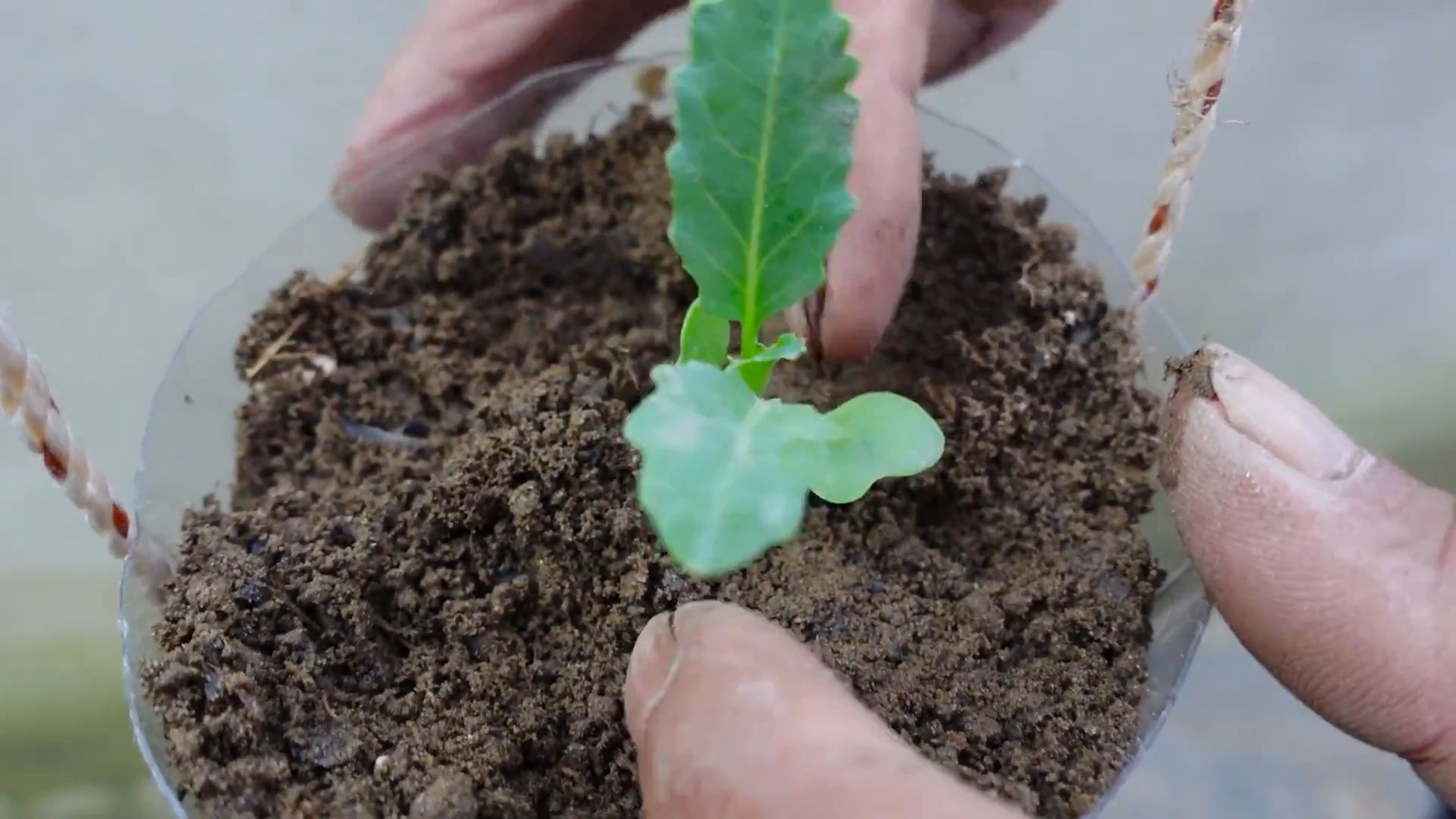
Conclusion
So, there you have it! Growing kohlrabi at home is not only achievable but also incredibly rewarding. From the crisp, refreshing taste of the bulb to the nutritious greens, you’re getting a two-for-one deal with this unique vegetable. Forget those bland, store-bought options; imagine biting into a freshly harvested kohlrabi, bursting with flavor and the satisfaction of knowing you nurtured it from seed to table.
This DIY trick for growing kohlrabi is a must-try for several reasons. First, you have complete control over the growing process, ensuring your kohlrabi is free from harmful pesticides and chemicals. Second, it’s significantly more cost-effective than buying kohlrabi regularly from the grocery store, especially if you plan on incorporating it into your diet frequently. Third, and perhaps most importantly, it’s an incredibly fulfilling experience to watch your garden thrive and to harvest your own food. There’s a certain magic in connecting with nature and providing for yourself in this way.
But the fun doesn’t stop there! Feel free to experiment with different varieties of kohlrabi. ‘Early White Vienna’ and ‘Early Purple Vienna’ are classic choices, but you might also want to try ‘Gigante’ for larger bulbs or ‘Superschmelz’ for its exceptional sweetness. Consider companion planting to enhance your kohlrabi’s growth. Marigolds can deter pests, while dill can attract beneficial insects. You can also adjust your planting schedule to achieve multiple harvests throughout the growing season. For a spicier kick, try adding a touch of cayenne pepper to the soil.
Don’t be intimidated if you’re a beginner gardener. Kohlrabi is relatively easy to grow, and with a little attention and care, you’ll be enjoying your own homegrown harvest in no time. Remember to provide well-drained soil, consistent watering, and plenty of sunlight. Keep an eye out for common pests like cabbage worms and aphids, and take action promptly if you spot any problems.
We wholeheartedly encourage you to give this DIY trick a try. It’s a fantastic way to add fresh, healthy produce to your diet, connect with nature, and learn a new skill. Once you’ve harvested your first kohlrabi, we’d love to hear about your experience! Share your photos, tips, and recipes in the comments below. Let’s build a community of kohlrabi enthusiasts and inspire others to grow their own food. Happy gardening!
Frequently Asked Questions (FAQ)
What is kohlrabi, and what does it taste like?
Kohlrabi is a cruciferous vegetable related to cabbage, broccoli, and cauliflower. It has a bulbous stem that grows above ground and edible leaves. The bulb has a mild, slightly sweet flavor, often described as a cross between a turnip and a water chestnut. The leaves taste similar to collard greens.
When is the best time to plant kohlrabi?
The best time to plant kohlrabi depends on your climate. In cooler climates, start seeds indoors 4-6 weeks before the last expected frost and transplant them outdoors 2-3 weeks before the last frost. For warmer climates, plant kohlrabi in the fall for a winter harvest. Kohlrabi prefers cooler temperatures and can bolt (go to seed) in hot weather.
How much sunlight does kohlrabi need?
Kohlrabi needs at least 6 hours of sunlight per day to thrive. Choose a sunny location in your garden for planting. If you live in a very hot climate, some afternoon shade can be beneficial.
What kind of soil is best for growing kohlrabi?
Kohlrabi prefers well-drained, fertile soil with a pH between 6.0 and 7.5. Amend your soil with compost or other organic matter before planting to improve drainage and fertility. Avoid heavy clay soils, as they can lead to stunted growth.
How often should I water kohlrabi?
Kohlrabi needs consistent watering to prevent the bulbs from becoming tough and woody. Water deeply whenever the top inch of soil feels dry. Aim for about 1 inch of water per week, either from rainfall or irrigation. Mulching around the plants can help retain moisture in the soil.
What are some common pests and diseases that affect kohlrabi?
Common pests that affect kohlrabi include cabbage worms, aphids, flea beetles, and cabbage root maggots. Diseases include clubroot, black rot, and downy mildew. Use row covers to protect your plants from pests, and practice crop rotation to prevent diseases. Inspect your plants regularly and take action promptly if you spot any problems. Organic pest control methods, such as insecticidal soap or neem oil, can be effective.
How do I know when kohlrabi is ready to harvest?
Kohlrabi is typically ready to harvest 50-60 days after planting. The bulbs should be about 2-3 inches in diameter. Don’t let them get too large, as they can become tough and woody. Harvest by cutting the bulb from the stem just above the soil line. The leaves can also be harvested and eaten.
Can I eat the leaves of kohlrabi?
Yes, the leaves of kohlrabi are edible and nutritious. They taste similar to collard greens and can be used in salads, stir-fries, or soups. Harvest the leaves while they are young and tender.
How do I store kohlrabi?
Store kohlrabi bulbs in the refrigerator for up to several weeks. Remove the leaves before storing, as they can draw moisture from the bulb. Wrap the bulbs in a plastic bag or container to prevent them from drying out. The leaves can be stored in the refrigerator for a few days.
Can I grow kohlrabi in containers?
Yes, kohlrabi can be grown in containers. Choose a container that is at least 12 inches deep and wide. Use a well-draining potting mix and provide plenty of sunlight and water. Container-grown kohlrabi may need to be fertilized more frequently than kohlrabi grown in the ground.
What are some ways to eat kohlrabi?
Kohlrabi can be eaten raw or cooked. Raw kohlrabi can be sliced, shredded, or diced and added to salads, slaws, or crudités platters. Cooked kohlrabi can be steamed, roasted, sautéed, or added to soups and stews. The leaves can be cooked like collard greens or spinach.
Is kohlrabi a healthy vegetable?
Yes, kohlrabi is a very healthy vegetable. It is low in calories and high in fiber, vitamin C, and potassium. It also contains antioxidants and other beneficial plant compounds. Adding kohlrabi to your diet can help improve your overall health and well-being.

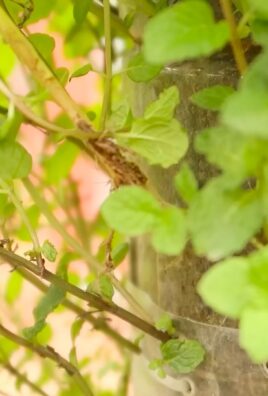
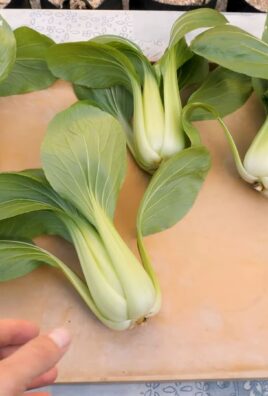
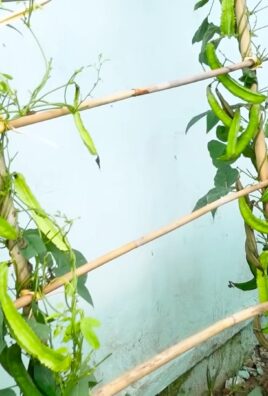
Leave a Comment